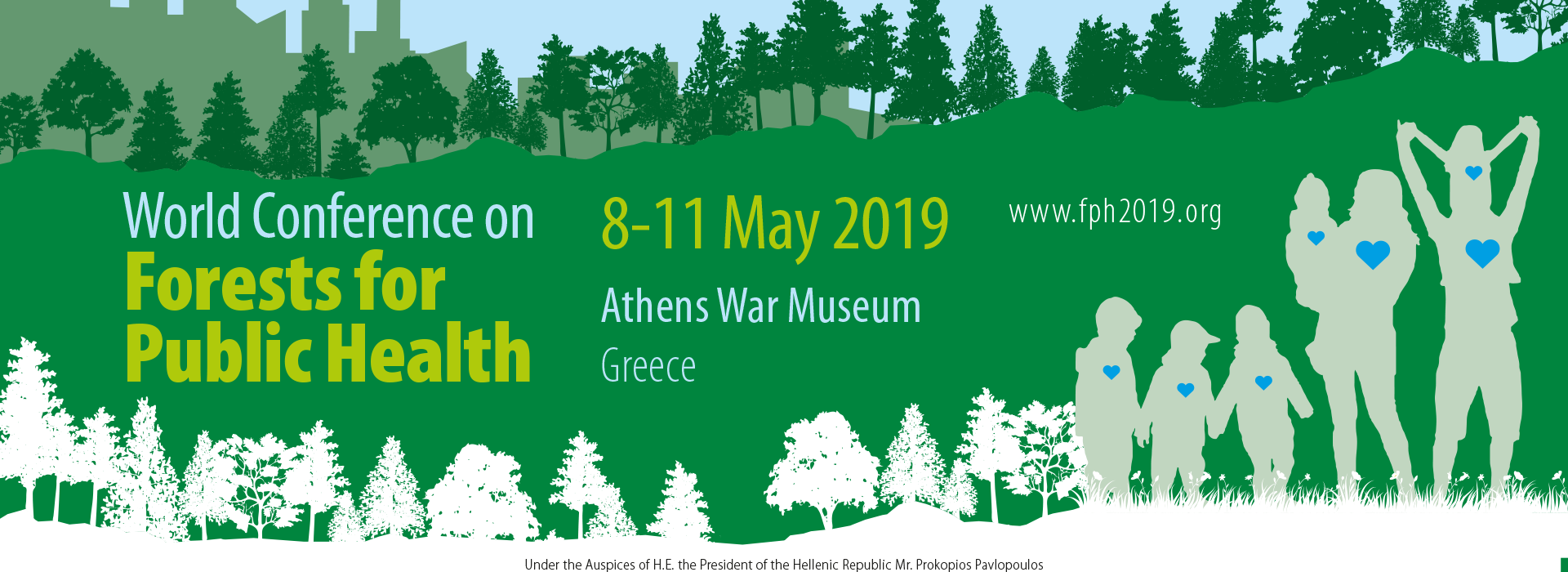
World Conference on “Forests for Public Health”
Welcome letter
Urbanization and modern lifestyle changes have diminished possibilities for human contact with nature in many societies. At the same time, many societies today face increasing incidence of poor physical and mental health associated with chronic stress, insufficient physical activity and exposure to anthropogenic environmental hazards that cannot be addressed by medicine and technology alone.
Contributing factors include increasingly sedentary occupations and lifestyles, increasing levels of mental stress related to urban living and contemporary work practices, and hazardous urban environmental conditions such as noise, heat stress, and air-pollution. They contribute not only to public health problems and increased expenditures for health care systems, but also lower productivity at work, increased work absenteeism, and other costly outcomes.
Natural elements and spaces such as trees, forests, urban and peri-urban forests, urban parks, gardens and green spaces have been seen as providing opportunities to ameliorate such trends. There is a growing body of evidence on positive relations between exposure to such natural environments and diverse human health indicators. One key message emerging is that contact with nature improves psychological health by reducing pre-existing stress levels, enhancing mood, enabling the recovery of cognitive abilities like directed attention, and in other ways supporting restorative processes and protecting them from the effects of future stressors.
Additionally, urban and ex-urban forests and green spaces may provide walkways and spaces for nature-based activities that may have not only preventive effects on the life-style related diseases but also enhance people’s health in general.
Walking and other nature-based activities are related to positive mood, increased sustained attention and cognitive function as well as reduced physiological stress (e.g. heart rate, blood pressure, blood sugar, stress hormones, depression, anxiety etc.) and improved physiological functions (e.g. NK cells activity, immune system, cardiovascular etc.).
Air pollution may affect the respiratory system, cardiovascular system, nervous system, urinary system, digestive system, and detrimentally affect a developing foetus during pregnancy. Urban forests may absorb a part of this urban air pollution and thus contribute to improving public health. For these and other reasons, then, public health interventions should consider the value of forests and green spaces in urban planning and design. A key message is that cities can enhance public health through urban green Planning.
In sum forests, urban forests and other green spaces may be incorporated into public health systems and policies to promote mental and physical health and reduce morbidity and mortality in residents by supporting relaxation and stress alleviation, stimulating social cohesion, encouraging physical activity, and reducing exposure to air pollutants, noise and excessive heat.
The aim of this conference is to bring together well-known scientists from different countries and disciplines to present research and state-of-the-art knowledge and theories on:
- The significance of the role of forests and green spaces in improving the health and wellbeing of a population.
- Challenges the urban and landscape planning fields face in designing green infrastructure that benefits physical activities both in urban space and in forest/nature.
Human health and wellbeing are vital socio-political and public health issues for today and for the future. They vitally define our lives. Forests, urban forests, and green spaces can have a significant influence on the health and wellbeing of many people. We might look at them as a kind of health insurance.


